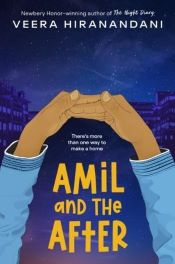For Hiranandani, writing this story gave her the chance to go back to a world she wanted to return to. She also explained why she shifted her attention to Amil this time around. “About a year after I wrote The Night Diary, I really missed the characters and I wanted to come back to them and revisit the world, but I didn’t want to write a direct sequel. I didn’t necessarily want to continue it exactly the way it was. I wanted to try to do something a little different. So I wanted to focus on Amil. A lot of the students that I would visit at school visits wanted a book from his perspective so I wrote this, sort of, companion novel where it does follow the story a few months after, but it has a very different feeling and a very different point of view, and it’s really looking at, what happens after the survival story? …Are they going to survive this horrible situation or not? And then they do, but as we know from either our own personal difficulties or going through a global pandemic… if you’re ok after the immediate crisis of it, ok isn’t always ok. There’s things to process. You have to put your life back together after that, kind of, trauma or disruption, and so that’s what Amil and the After is looking at. It’s looking at Amil and his family trying to rebuild their lives on, with this very unsteady feeling, and so that’s the story I wanted to tell with this new book.”

Food, I think, is really important to me and is a way for me to connect clearly and solidly with both of the cultural identities in my family.”


We may not all be the same, but we’re all connected by our humanity. When we harm each other, we harm ourselves. So when we support and help each other, we make our own lives better.”

Podcast: Play in new window | Download
Subscribe: RSS

Want to join the discussion?
Feel free to contribute!